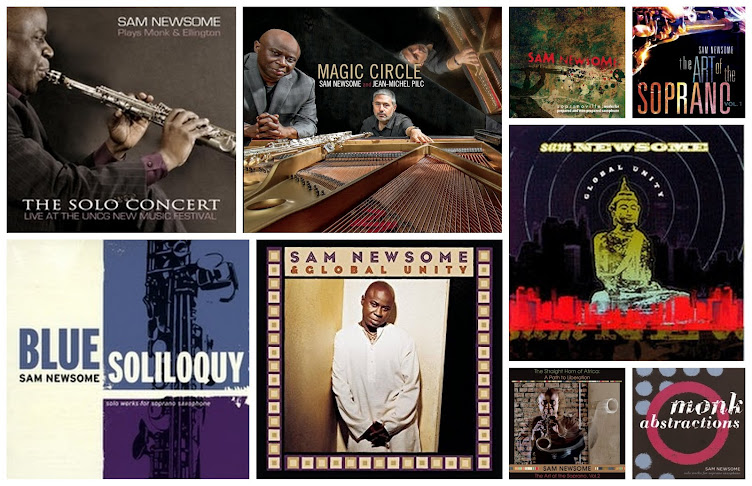Since becoming a soprano player over 20 years ago, I've held the soprano chair in two saxophone quartets. The first was with the Collective Identity Saxophone Quartet, which I co-led with Jorge Sylvester on alto, Aaron Stewart on tenor, and Alex Harding on baritone; and the second was with the Brooklyn Saxophone Quartet (also known as BSQ), which was co-led by tenor saxophonist David Bindman and baritone saxophonist Fred Ho. During the two years that I was with BSQ, both John O'Gallagher and Rudresh Mahanthappa occupied the alto chair.
Even though I loved playing the arrangements, and performing in such a musically self-governing context, it was, however, frustrating always feeling overpowered when we all played together. This was partly due to me still figuring out the instrument, and partly due to the other members not always being sensitive to the delicate nature of the instrument.
I remember saxophonist Greg Osby expressing the same concerns. He also felt musicians could be insensitive to the soprano's dynamic limitations. It's a different animal. And those accompanying a soprano player don't always understand that you can't treat it like a piccolo alto or small tenor up and octave. The soprano its own entity.
All kvetching aside, I some how figured out how to project. And when I couldn't, I used a mic. And I must admit, it did make me a better player and forced me to push myself beyond what I thought was capable. So I do see playing in saxophone quartets as a very positive experience, and highly recommend that all saxophonists have this experience at least once during their careers. It's like no other.
In fact, here are five things I learned from playing in saxophone quartets that I feel makes us stronger players, no matter what musical context we find ourselves in.
1. Learned how to be more autonomous when providing rhythm. As wind players, I think we can all agree that when it comes to the rhythmic accompaniment, we tend to be more receivers than givers. This is understandable being that known as melodic instruments. Even though a strong rhythmic understanding is vital to our improvisation, however, applying it from the standpoint of a percussionist only strengthens our understanding of it.
2. Learned to think nonlinearly about harmony. I found this to be particularly true when having to improvise over chord progressions. There seemed to be more harmonic freedom when the chordal accompaniment is being provided by other saxophones versus a piano or guitarist. Harmony seems to exist more as harmonic implications rather than harmonic absolutes. Looking at harmony in this way taught me how to think beyond diatonic harmony and the available tensions. I also learned how to approach improvisation textually and atonally.
3. Learned how to blend with other saxes. As the soprano player in these groups, it was particularly challenging in that not only did I have to project over these much larger and louder horns, but I had to also find a harmonious blend. Also, the pairing of instruments was always changing. Within one tune it could be soprano/tenor, soprano/bari, soprano/alto/tenor, soprano/tenor/bari, you name it. Each with its own set of challenges. Having to do this was a great lesson in textual flexibility.
4. Learned how to function in non-melodic roles. In both groups, it was a challenge having to provide harmonic and rhythmic accompaniment, especially during some of the more extended improvisations. This forces you to think beyond the linear construct of the saxophone. I found that developing a sonic vocabulary of extended techniques was extremely useful in this setting.
5. Developed endurance. As a soprano player, there's probably not a better training ground for building endurance and overall chops strengthening than playing in a saxophone quartet. For one, you're required to play continuously for four to five minutes with few moments to rest; two, you're required to project over three much larger horns. (In classical saxophone quartets this is less of an issue since they tend to play set-ups that give them more dynamic range, especially when it comes to playing at softer volumes); and three, you're required to play a fair amount of written material over an extended period of time, and written material tends to be more demanding on your chops.
Again, these are just some lessons I've learned. I'm sure every sax player would come away with their own unique set of learning experiences.
So I'd like to conclude with a piece from Collective Identity's first recording called The Mass. This is my original titled "The World According to Shaquana Goldstein." It's an extended three-part suite that clocks in around 12:53, and it features pretty much everyone. This happens to also be the first saxophone quartet piece I ever wrote. And listening back to it several years later, it doesn't sound bad. With these guys, it's hard to go wrong. And I owe these amazing musicians a huge debt. They were very instrumental in my development. I was fortunate to have cross paths with them. Oh yeah, and this is a kinder, gentler me. I hadn't yet gotten into all the crazy stuff. I was still employable.
Thanks for reading!





